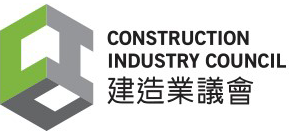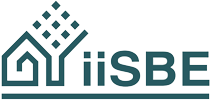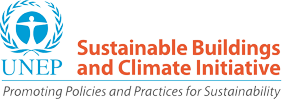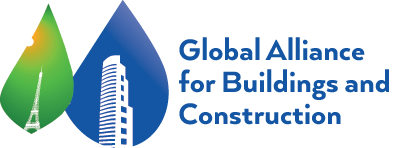
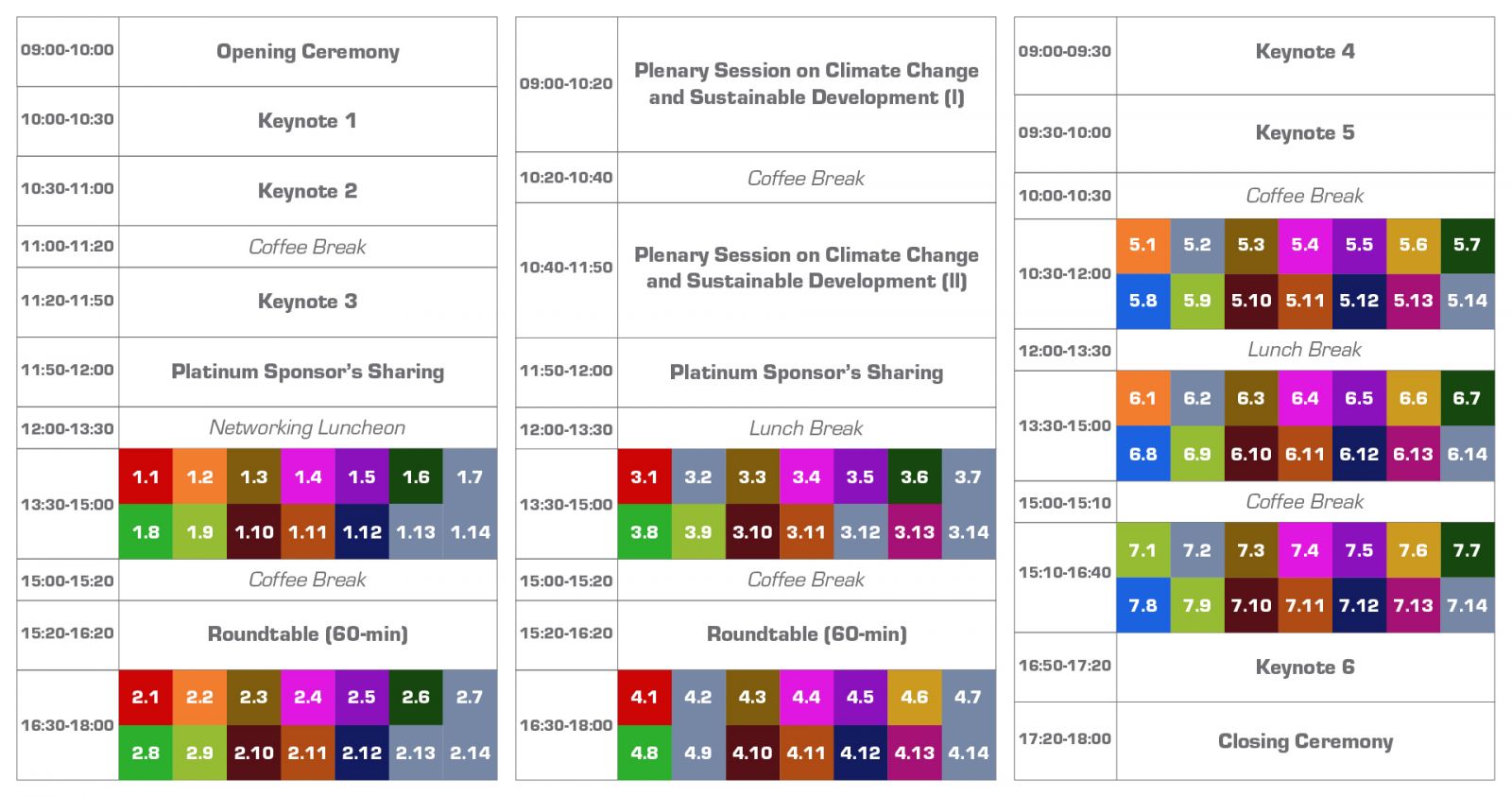
A. Mainland China Sessions
With a population of 1.3 billion, China is one of the world’s fastest-growing major economies while the rapid urbanisation creates great challenges on both the sustainable built environment, as well as the health and well-being of people. The 4 Mainland China Sessions will focus on various aspects addressing the issues on the transformation of existing buildings, challenging technologies of super skyscraper buildings, health and well-being for better places for people, and green finance opportunity for low carbon economy development.

Session 1.1 The Comprehensive Scheme on Green Retrofitting and Performance Enhancement of Existing Buildings in China Session Organizer: China Academy of Building Research From 1995 to 2005, China’s building stock nearly tripled, and it is expected to nearly triple again by 2030. This forum will investigate the goverence of existing buildings in China from the policy perspective, the technology for improving energy effiency of buildings, and the standards for green retrofitting. Strategies have been develop to response to different climatic conditions, building types and users. It will lead to different technical approaches and considerations on the green retrofitting policy and performance enhancement of buildings. Case studies will be used to illustrate the implementation process. The forum has invited five experts to share their professional insights and academic research with us, including the retrofit of green roofs, retro-commissioning, and retrofits of existing commercial buildings, building performance enhancement of existing residential dwellings and the experience on sustainable building operational and management. Session 2.1 Design and Construction Challenges of Eco-Skyscapers in China Session 3.1 Turning Green to Gold – Green Practices for Urbanization in China Session 4.1 The Development Framework and Professional Best Practices of Healthy Buildings in China Session Organiser: Green Building Research Centre and the Chinese Society for Urban Studies With the joint efforts of China Academy of Building Research, the Chinese Society for Urban Studies and the China Architecture Design & Research Group, China has developed its “Assessment Standard for Healthy Building” (T/ASC 02-2016), and published in the first quarter of 2017. The session will cover a wide range of topics, including the development of the China Assessment Standard for Healthy Building, the best professional practices and its applications, the control and prevention of the exposure of indoor air pollutants PM2.5 against the health risks of occupants, the technological innovations and business case studies on how to monitor, manage and control the indoor air quality for the occupants in dwellings. |
B. Regional Sessions
The 4 interactive 90-minute Regional Sessions will take place on 5 June (Day 2, Session 1.2 and 2.2) and 7 June (Session 5.1 and 6.1). Climate change and issues related to sustainability in the building and construction sectors are, of course, central to the purpose of the WSBE17 Hong Kong conference. There are, however, significant variations in the intensity and importance of specific issues in various countries that may not be evident in some of the global presentations.
The Sessions will be presented by the 20 Regional Conference Organisers and chaired by SBE16 Conference Series Co-owners. The 20 national and regional conferences that took place during 2016 as part of the SBE16 series provided an excellent opportunity to hear about some of these differences. One or more representatives from all of these locations will be present at WSBE17 Hong Kong and are being invited to take part in the Regional Roundtable sessions, in order to describe the conditions in their regions and to take part in open discussions about the significance of current conditions, initiatives and trends.

|
C. Paper Sessions - Conference Track
With the theme of “Transforming Our Built Environment through Innovation and Integration: Putting Ideas into Action”, 330+ academic researches and business cases from 50 countries will be presented in 70 paper sessions at WSBE17 Hong Kong.
To facilitate focused and in-depth discussions, the 330+ papers that address the Conference theme, major discussion areas (Sustainable Neighbourhood, Deep Building Renovation, High-performance Building and Community Empowerment) and interconnected domains (Policy & Standard, Practice & Business, Science & Technology and People & Community) are grouped into 12 Conference Tracks:
D. Special Sessions

Session 6.14 BEAM Plus Neighbourhood: From Theory to Praxis Session Organiser: Hong Kong Green Building Council Limited At the Habitat III Cities Conference in Quito, Ecuador, in late 2016, the New Urban Agenda was adopted by the Untied Nations to set a new global standard for sustainable urban development by taking into the account of the Paris Agreement on Climate Change. The Agenda also put emphasis on the role of cities in social inclusion, economic prosperity and environmentally responsive and resilient urban systems through improved urban planning and design, collaboration and effective use of resources, promoting quality public spaces, supporting green initiatives and infrastructural provisions etc. This echoes the need for a concerted approach to tackling multiple challenges in city and urban development. Neighbourhood, as a basic “city block”, can play a critical role in sustainable urban development. The compact and dense urban morphology in Hong Kong also implies that the notion of neighbourhood can vary in different degrees in both its scale and typology. With this in mind, BEAM Plus Neighbourhood, the first rating tool in Hong Kong to assess urban sustainability at a neighbourhood or community scale, was developed to assist the development industry in integrating a broader framework of sustainability indicators at the inception or master planning stage of a development project before it proceeds to the implementation phase. It aims to fill the current gap in the BEAM Plus Suite of building-level tools: New Buildings, Existing Buildings and Interiors. The Neighbourhood tool places emphasis on the design and provisions for space between buildings, and embraces socio-economic as well as ecological aspects of a development. Assessment by the tool is divided into seven performance aspects: Community, Site, Materials and Waste, Energy, Water, Outdoor Environmental Quality, as well as Innovations and Additions. By adopting a more holistic approach to the assessment such as the foregoing, it is hoped that BEAM Plus Neighbourhood would play a key role in creating more liveable and healthier environment in Hong Kong. To ensure greater relevance, user-friendliness and smooth operation of the tool, HKGBC engaged three life projects to undergo semi-internal pilot-testing conducted between 2015 to 2016 prior to recalibrating the launch version of the tool. The three projects are: the Subsidized Sale Flats Development at Fat Tseung Street West of Hong Kong Housing Authority (HKHA), the Transformation of EMSD Headquarters into a Green Building and the West Kowloon Cultural District of West Kowloon Cultural District Authority (WKCDA). |

Session 6.2 SBE Urban Challenge: Assessment Protocol and Case Studies Session Organiser: iiSBE The performance assessment of small urban areas is complex, since it raises questions of scale (how large is a small urban area?), suitable key performance indicators, appropriate reference performance benchmarks (similar areas or historical values or...?). Research and professional teams from several countries will present, analyse and discuss their own approaches to small-area urban performance assessment in the session, supported by case studies where possible. The sessions will compare the various methods and tools that have been used to describe and assess key performance aspects of small urban areas (e.g. neighborhoods or urban districts). This is an area of research that is under active development in a number of countries around the world and the session should therefore be of considerable interest to many delegates. Session 7.2 SBE Buildings Challenge: Assessment Protocol and Case Studies Session Organiser: iiSBE Building Performance Evaluation compares performance in key aspects (e.g. energy, emissions, water, IEQ, cost) that was predicted at the design stage through simulations and other predictive methods and tools, with the actual performance as assessed during the operation of the building, after at least two years of operation. Research and professional teams from several countries will present, analyse and discuss their own approaches to BPE in the session, supported by case studies where possible. Such building performance evaluations are extremely useful to all major actors in the industry who want to have a better understanding of the gap in performance between design and operations. The Canadian iiSBE team has previously undertaken this type of building performance evaluation, and presented the results of the evaluation of nine Canadian case studies at the 2014 WSB Conference in Barcelona. The results were of considerable interest and utility to the Canadian industry, and we anticipate that many other research-oriented teams may find their results to be of equal value in their own regions. |

Around 100 teams of young innovators from 25 countries have submitted their finest works to showcase their aspirations to the greener future. After multiple rounds of judging and deliberations, the juries have selected 8 Shortlisted Teams. The 8 teams will present at WSBE17 Hong Kong to impress the juries and receive their final awards. Please click here to learn more about the Competition. |

Session 1.7 Vision-led Sustainable Neighbourhoods: Myths and Musts Session Organiser: AECOM Why is it time to reboot established approaches to neighborhood planning? When is a vision not a vision? And what are the myths and musts for achieving vision-led planning? Fact: Asia is one of the world’s fastest urbanizing regions, providing significant opportunities and challenges for those shaping new developments or regenerating and re-integrating older ones. It has the ability to tip the scale for the rest of the world through its successes and failures. However, societal needs and environmental challenges in cities are growing in complexity. Worldwide, there is reducing availability of green-field versus brown-field land. And decades of galloping urbanization now raise the challenges of preserving the natural resources, heritage and public realms that distinguish and nurture the city, and that connect citizens with the city and with each other. Future climate change particularly for coastal cities and those in flood plains also makes the challenges even more complex. The factors driving designs of future new towns are considerably evolved from those that shaped the “older” new towns – such as Shatin, Hong Kong’s first new town development forty years ago. Also, Hong Kong, Macau, Guangzhou and Shenzhen are now not only cities, they are part of arguably the world’s largest metropolis – the Pearl River Delta. How can we achieve sustainable neighborhoods in the face of urbanization on such a scale? Beyond meeting the basic necessity of housing, what role should the built environment play – in resilience and sustainability - in the future? How can the built environment take on a more adaptive and citizen-friendly form for neighborhood communities to flourish? Make up your own mind: What are the myths and musts of achieving sustainable neighborhoods? This AECOM-moderated session will engage panelists and audience participants in an exchange of experiences and innovative ideas to better anticipate and address the future design and delivery of sustainable neighborhoods that achieve jointly positive economic, environmental and social impact. Session 1.13 Healthy and Sustainable Building for Resilient Future Session Organiser: Link Asset Management Ltd. / Nan Fung Development Ltd. The new commercial development at 77 Hoi Bun Road, Hong Kong, is a fine business case for developers in building Green Buildings, which has been a global trend in the last decades. Climatic challenges, energy performance, efficient use of resources, users’ health and wellness, ease of maintenance and safe operations of the building systems, site impacts and amenities as well as neighbourhood engagement have all been carefully considered by the multi-disciplinary team with an aim to achieve new benchmark for Grade-A office buildings. Nan Fung Development Ltd. and Link REIT both have strong commitments to the environment, and sustainable development is central to their business philosophies:
Speakers will hold a panel sharing session on how an integrated design approach is the key to future sustainable and healthy development. Session 2.7 Deep Energy Saving and Other Innovative Green Measures for Commercial Buildings in Hong Kong, Mainland China and Overseas Session Organiser: Swire Properties Ltd. Electricity use in building remains the largest source of local carbon emission in Hong Kong, accounting up to 63% of the total emission. Enhancing energy efficiency in our new and existing building stocks becomes crucial to our commitment in meeting Hong Kong’s carbon target and also filfulling both Hong Kong’s Climate Action Plan 2030+ and Envergy Saving Plan 2015-2025+. With Gross Floor Area of 27.2 million square feet, Swire Properties recognize the potential significant contribution it can make to our climate. It starts its energy saving journey as early as 2001 with firm determination, clear vision, professional knowledge, researches and use of design tools. It strives to achieve the committed targets at the outset through concerted efforts of the whole team at both design and operational stages. In this parallel session, we deep dive into our long-term energy saving strategy and practice, ranging from high-level management system to day-to-day data analysis over building services systems in Hong Kong and mainland China. Our ten-year collaboration with Tsinghau University contributes to various successful energy efficient case study. The knowledge accumulated also join together with advanced technology and best practices brought up by top-tier consultancy firm to implement in our new building. These are also demonstrated by another case study in Japan. Going beyond energy efficiency, the total package of ‘multiple benefits’ derived from green sustasinable building will also be discussed. Session 2.13 Powering Up Smart City Session Organiser: CLP Power Hong Kong Ltd. CLP’s session will include building management of Hong Kong Airport, world-class Data Centre, smart power control from Science Park and CLP’s energy management services. Our moderator will introduce the speaker background and do a shorten wrap up after each topics. Presentation Rundown: Powering Up for Brighter Tomorrows by CLP
Big Data Era for Building Management by Airport Authority Hong Kong
Smart Power Control for Peak Load Compensation by Hong Kong Science and Technology Parks Corporation
How Hong Kong to be a Data Centre Hub in Asia in the Next Decade by Hong Kong Data Centre Association
Session 2.14 Sustainability Assessment of Buildings as Part of Green-Public Procurement Based on the German BNB-System Session Organiser: Division Sustainable Building, Federal Institute for Research on Building, Urban Affairs and Spatial Development (BBSR), Germany In Germany, adherence to the principles of sustainable development is an essential aspect of procurement by the public authorities. This applies both to the planning and construction of new buildings (high performance buildings) as well as to modernization projects (deep building renovation). The Federal Ministry for the Environment, Nature Conservation, Building and Nuclear Safety (BMUB) formulated with the Guideline for Sustainable Building essential requirements for Federal Buildings. The Assessment System for Sustainable Building (BNB) provides a tool which supports planning and evaluation and is used in public procurement. It is freely accessible on the internet. The BNB simultaneously and equally addresses the classic three dimensions of sustainability and the technical implementation and the planning process as cross-sectional qualities. Both LCA and LCC are used. In the workshop, the BNB will be presented using the example of the modernization of school buildings and the planning of research and laboratory buildings. Practical examples from Germany and Austria will be explained. In other lectures, possibilities for the increased use of renewable raw materials as well as tools for the support of integrated design are discussed. The workshop is aimed at representatives of the public sector as well as developers and users of planning and assessment tools. In the moderated discussion, the public authorities deal with certification systems as well as the importance of integrated design for sustainable construction. Session 3.7 High Performance Transportation Hubs : Their Critical Role and Requirements? Session Organiser: AECOM Beyond dispute, the continuous expansion of transportation infrastructure to connect more of the global population to more of the world has been achieved up to now at a heavy cost to the environment. This AECOM-moderated session will engage panelists and the audience in an exchange of experiences and ideas on how to continue providing transportation facilities that enrich people’s experiences of the world and enhance the future economic competitiveness of their cities and countries, with the least possible environmental degradation. This session provides a practical discussion on the challenges of integrating these large scale additions to the built environment successfully. It features the WSBE17 host city of Hong Kong as one of its case studies. Hong Kong is a microcosm of so many of the world’s most pressing, transportation-related environmental challenges and, at the same time, also at the forefront of piloting and practicing many of the world’s leading ideas for solutions. As the city moves forward with its strategies to update its role in the Pearl River Delta – and as Asia’s world city - we look at the globally pioneering approaches being implemented for the signature land, sea and air infrastructure to help its continuous evolution as a Smart City. How do high performance transportation hubs translate into high performance as a Smart City, and as a sustainable city? Session 3.12 Emerging Practices in Sustainable Built Environment Session Organiser: Allied Environmental Consultants Ltd. Themed “Emerging Practices in Sustainable Built Environment”, this 90-minute Parallel Session (hereinafter the “Session”) will focus on how sustainability best practices can be applied to local buildings with the aid of case studies. In general, a typical building has a “lifespan” of over 50 years. It is without doubt that operation and maintenance phase plays an important role in the environmental performance of a building throughout its life cycle. One of the common lessons learned from the case studies is the importance of a “body check-up” for buildings through conducting regular audits to collect data, which provide the basis for identifying areas of improvement and enhancing environmental performance. A few case studies also demonstrate another way of improving environmental performance through collecting feedback from stakeholders such as staff members. These role models serve as good examples of stakeholder engagement when it comes to enhancing sustainability of buildings. The Session will first begin with individual presentations, followed by a question-and-answer session, where speakers and audience will exchange insights on the topics presented. Session 3.14 Environmentally Responsive Buildings and Human Interactions Session Organiser: Somfy Asia-Pacific Co. Ltd. It has become more and more important understanding how we can create the best possible interaction between the outside and inside – via environmentally sound and high performing facades creating the healthy conditions we need – and how to allow for human interaction with the solutions we apply to our buildings. The future will be connected buildings on top of connected devices - Connections through a cloud platform. How can the convergent technologies empower and provide us with the solutions to manage our own home; a CEO of a tech startup will talk about his vision of home infrastructure in the age of the IoT. Session 4.7 The Secret Ingredients of Sustainable Real Estate Development Session Organiser: Swire Properties Ltd. What constitutes a sustainable built environment? And how do the myriad of stakeholders involved contribute and collaborate to this objective? Beyond high performance buildings, engagement and collaboration with building users, the community, and other parties are essential to making and keeping sustainable places. This session will establish a platform with experts from a range of disciplines to discuss:
With the aim of bringing a broader view to the management requirements for a sustainable built environment, this session aims to the support the conference theme of “Putting Ideas Into Action”. Session 4.9 A Collaborative Approach in Delivering Low Carbon Living Session Organiser: Arup To make a sustainable environment into reality, many parties are needed. To start, we need investors that have a vision to provide the resource to kick start a project. Next, we need to have developers to put together a team to plan and execute projects that focus on sustainable development. During the design of the projects, architects and consultants need to work closely with all the relevant parties to bring the vision into the physical world. In this session, UBS have been working with investors that are keen to creating sustainable projects. We also have New World Development Company Limited to share about the projects that realized in the recent years. KPF is a well-known architect firm that delivers many sustainable buildings around the world. Lastly, we also have Arup as a total engineering consultant to share a holistic approach to integrate multi- disciplinary professionals in realizing many green and sustainable projects. After the individual presentations, the panel will provide their views in how working together is the key success of creating the new sustainable world for our future. Session 4.14 PolyU Green Deck : A Catalyst for a Green and Vibrant Community Session Organiser: The Hong Kong Polytechnic University Located at Hung Hom since 1957, The Hong Kong Polytechnic University (PolyU) has been witnessing the changes and development in this area over the past 60 years. The far from satisfactory urban planning model, rapid growth in population and economic activities in nearby districts have brought along many teething problems: heavy traffic, air and noise pollution, poor connectivity, lack of open space and many others. Not only the 30,000+ staff and students of PolyU suffer, the physical and mental well-being of nearby communities and the daily commuters have also been adversely affected. PolyU, a university which cherishes a sustainable future, is committed to finding an innovative solution to revitalize the districts. With “To learn and to apply for the benefit of mankind” as its motto, PolyU is committed to blazing new trails and bringing positive changes to society. In order to solve the problems faced by Hung Hom old district and to revitalize the nearby districts, PolyU initiated the Green Deck idea in 2012 and engaged a consultant in mid of 2013 to conduct a feasibility study. With the encouraging findings, the University has embarked on extensive community engagement exercise and a wide variety of related research. Over 100 PolyU academics have been involved in a number of related practical research in the past few years and the research findings has confirmed that the Green Deck is an obvious choice for a sustainable future. Chairman of Green Deck Task Force and PolyU research teams will share their findings and insights with conference particpants on this social innovative project. Session 5.2 High Performance Buildings and Sustainable Neighbourhoods in Sweden Session Organiser: Sweden Green Building Council The Swedish construction sector’s extensive activities in the environmental sphere are of international interest. Sweden is also famous for their pursuit of sustainable development in the field of urban building and planning. In this session, five cases of best practice high-performance buildings and three projects for sustainable neighbourhoods in Sweden are presented. Session 5.14 Smart and Digital Transformation for Sustainable Living Session Organiser: Sino Group Smart and digital transformation is now and not in the future. With the process of making our world smarter in every aspect of our lives, data from Internet of Things (IoT) and artificial intelligence (AI) for process are the essential enabler. As one of the leading developers, Sino Group has a good number of initiatives in transforming their building portfolio into a better environment for better experience. These initiatives includes providing healthy and sustainable living space in shopping malls, offices, and residential buildings, enhancing user experience through smarter application of technology and apps. Exemplary of implementing technology, Project Moses is making eco homes a reality and connecting with the community through AI and IoT. Specifically in the built environment, AI can help in finding the energy use pattern and allow smart control to match the supply and demand of our resources within our buildings. Lastly, beyond using the technologies, the top-down and bottom-up approaches in making our building development more sustainable for our future generations will be covered. After the individual presentations, the panel will share their views on how to bring the smart and digital transformation into reality so that we can enjoy a sustainable world for ourselves and our children. |



